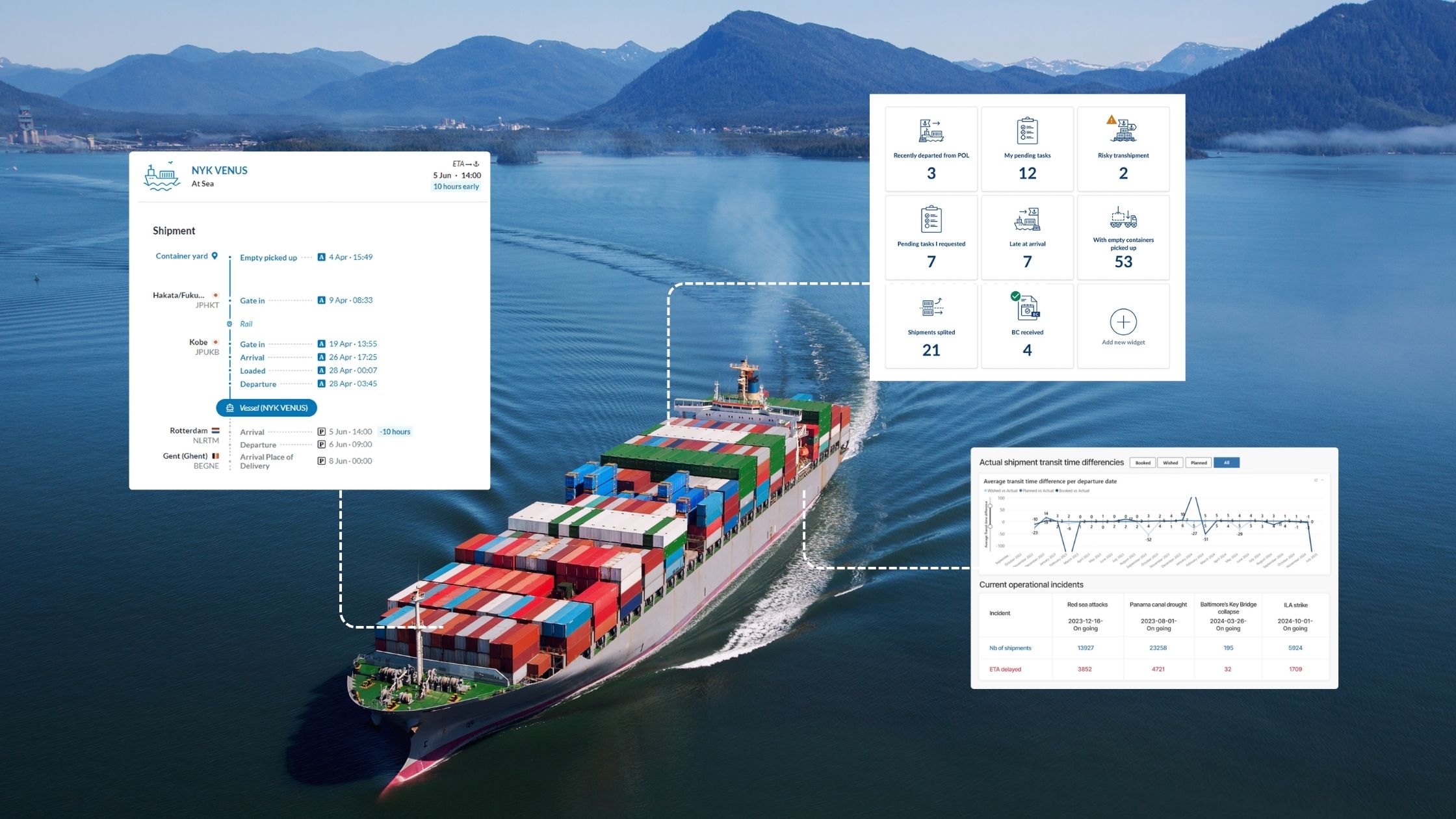Ocean Freight Visibility: The Essential Advantage for Shippers and How to Enhance It
Visibility and Tracking
What Is Ocean Freight Visibility?
Ocean freight visibility means having clear, timely insight into the status and location of container shipments throughout the entire shipping process, from booking and loading to transit and delivery. It involves real-time tracking, access to shipment documents, and proactive updates that keep all stakeholders informed.
This level of transparency goes beyond simply knowing vessel schedules. It includes accurate container-level tracking, alerts about delays or exceptions, and centralized data that ties together carriers, forwarders, and logistics teams.
Why Ocean Freight Visibility Is an Essential Advantage for Shippers
Ocean freight operations are often complex and subject to delays caused by port congestion, weather, equipment shortages, and unforeseen disruptions. Without full visibility, these challenges lead to costly delays, penalties, and damaged customer relationships.
Strong ocean freight visibility enables shippers to:
-
Proactively manage exceptions and delays before they escalate
-
Reduce detention, demurrage, and storage fees by enabling timely action
-
Improve coordination across transport, warehousing, and delivery with accurate ETAs
-
Enhance communication and alignment among logistics teams and partners
-
Build greater confidence and reliability in supply chain planning and customer commitments
This advantage is not just operational. It directly impacts cost control, efficiency, and service quality.
How Shippers Can Enhance Ocean Freight Visibility
Improving ocean freight visibility involves a combination of smart technology, collaboration, and process optimization. Here are key strategies to make it happen:
1. Centralize All Shipment Data
Fragmented systems and scattered communication are a major barrier to visibility. A centralized platform allows logistics teams, partners, and stakeholders to work from a single source of truth. This ensures consistency across shipment updates, booking information, documents, and performance data, reducing manual errors and streamlining operations.
2. Enable Multi-Carrier Container Tracking
Most shippers rely on multiple carriers and freight forwarders across different regions. Visibility should not stop at the port or be limited to one carrier. Integrating data across all transport partners is essential for maintaining continuous, real-time tracking from door to door including inland legs, transshipments, and handovers.
3. Use Predictive ETAs for Better Planning
Scheduled vessel departure and arrival times are often inaccurate. Predictive ETAs, powered by real-time data, provide a more realistic forecast by factoring in port congestion, historical reliability, vessel behavior, and weather. This improves downstream planning whether it's scheduling pickups, warehouse shifts, or customer deliveries.
4. Automate Alerts and Exception Handling
Instead of reacting to delays once they’ve caused disruption, logistics teams need to be alerted as soon as a risk arises. Automated notifications about late containers, missing documents, or customs delays allow teams to act quickly reducing the impact on timelines and costs.
5. Improve Document Visibility and Accuracy
Delays often stem from paperwork issues. Ensure that documentation like shipping instructions, bills of lading, and customs forms are submitted, approved, and shared on time. A platform that monitors document flows and flags missing or incorrect files keeps operations moving without costly rework or hold-ups.
6. Monitor Performance and Hold Partners Accountable
Visibility isn’t just about shipments it’s also about measuring how well different carriers and partners perform. Use KPIs to track carrier punctuality, forwarder responsiveness, and internal handling times. Clear metrics help teams identify bottlenecks, negotiate better terms, and build a more reliable network.
7. Foster Real-Time Collaboration
Visibility tools should support collaboration across internal teams and external partners. When everyone is aligned on container status, documentation, and next steps, responses are faster, and errors are reduced. Centralized communication tools reduce the need for back-and-forth emails and calls.
8. Implement a Control Tower Approach
A control tower gives a real-time overview of all shipments, alerts, tasks, and exceptions in one place. It becomes the command center of the shipping operation allowing for immediate decisions, risk mitigation, and better long-term planning.
By investing in these strategies, shippers can dramatically increase their ability to anticipate problems, reduce inefficiencies, and deliver consistent service levels to their customers.
How BuyCo Drives Better Ocean Freight Visibility for Shippers
BuyCo's Ocean Freight Software is purpose-built for container shippers, offering a visibility solution that goes beyond tracking. The platform brings together all stakeholders, systems, and data into one unified environment empowering logistics teams to manage shipments proactively and with full transparency.
Here’s how BuyCo helps elevate visibility across the supply chain:
Real-Time, Multi-Carrier Container Tracking
BuyCo integrates directly with over 97% of global ocean carriers and key inland transportation providers. This enables accurate, real-time container tracking from port to port and door to door, no matter which carrier is used. Shippers can monitor the entire journey and receive proactive updates when exceptions arise.
![]()
Predictive ETAs and Exception Alerts
BuyCo uses AI-powered analytics to calculate predictive ETAs based on real-time conditions like vessel delays, port congestion, and weather. Smart alerts notify teams of risks and delays early allowing them to take corrective action before problems escalate.
Centralized Visibility and Collaboration
Instead of managing data across spreadsheets, emails, and carrier websites, BuyCo brings everything together. The platform centralizes bookings, documents, container events, tasks, and partner communications in one place. This allows internal teams and external partners to stay aligned and react faster.
Shipment Control Tower
With BuyCo’s Control Tower, logistics teams get a comprehensive, real-time view of every shipment in transit. The dashboard highlights late containers, missing documents, or unplanned changes so users can prioritize what needs attention and take action in real time.

Full Document and Task Monitoring
BuyCo tracks the status of all critical documents, from shipping instructions and BL drafts to customs forms ensuring timely submission and compliance. Users are alerted to late, missing, or inconsistent entries, helping to avoid customs holds and handover delays.
Performance Monitoring and KPI Reporting
With built-in analytics, shippers can evaluate carrier, forwarder, and team performance using real operational KPIs. This visibility into service quality and bottlenecks enables better decision-making, supplier accountability, and continuous improvement.
In short, BuyCo gives shippers the tools they need to move from fragmented, reactive logistics to a connected, predictive, and high-performance shipping operation. It turns visibility into a real business advantage reducing costs, improving agility, and increasing customer satisfaction.
Curious how BuyCo can help you increase Ocean Freight Visibility for your business? Request a demo today.




